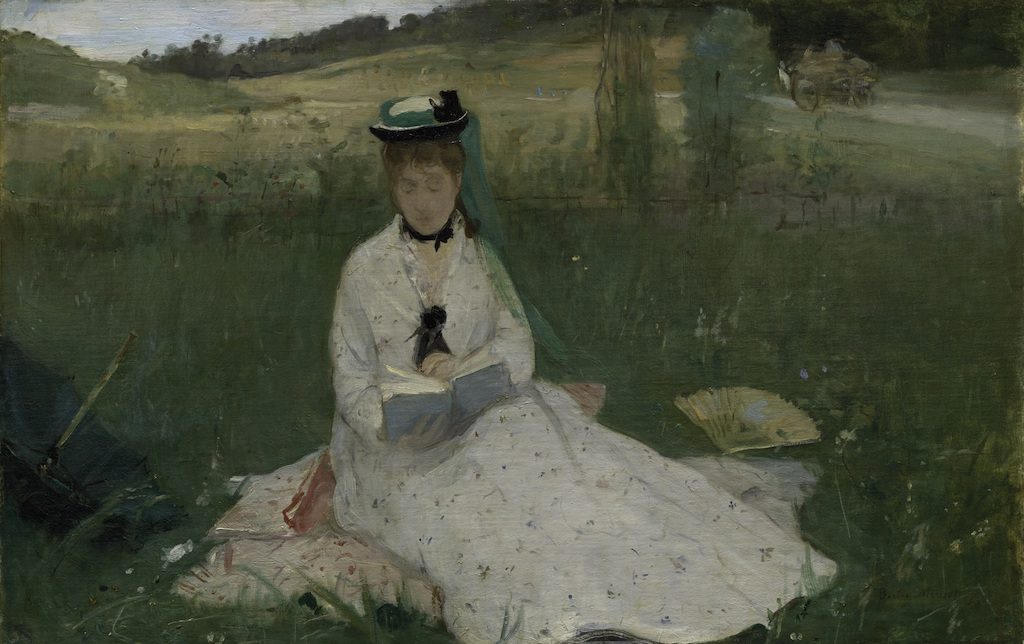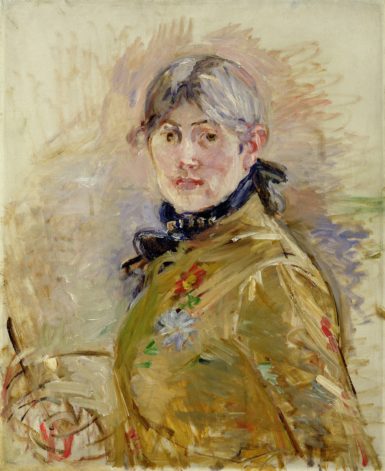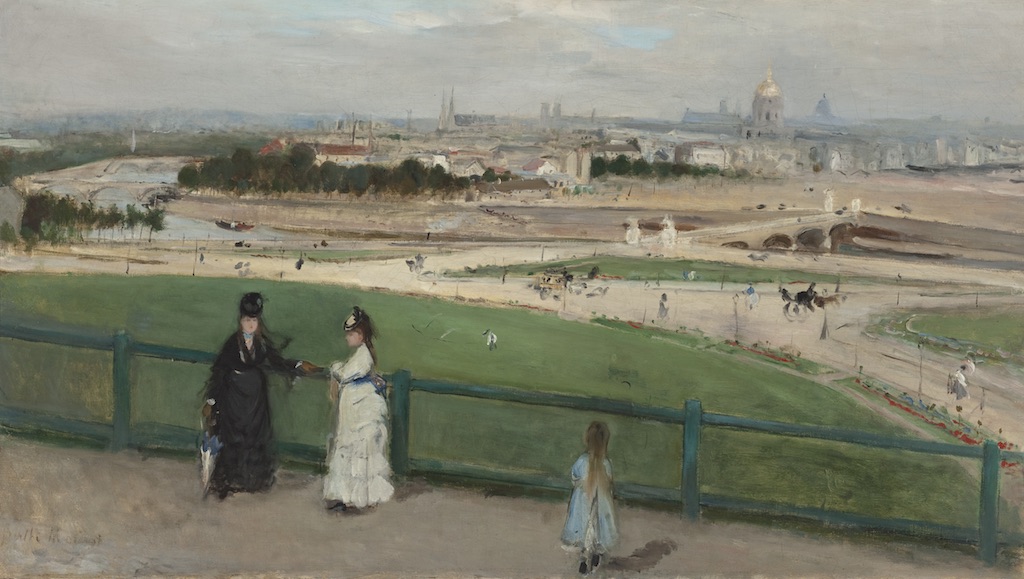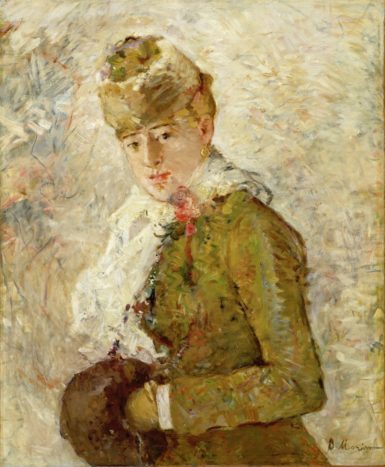[ad_1]

Berthe Morisot, Reading (The Green Umbrella), 1873.
©THE CLEVELAND MUSEUM OF ART
For a long period of time, despite being one of the most well-connected artists of her era, Berthe Morisot was largely under-recognized. The reasons for that were sharply underlined by critic Jeannette Lowe in the November 28, 1936, issue of ARTnews. “That she was a woman, and of considerable social position, led critics of her own time to treat her work as that of a dilettante,” Lowe wrote. With a Morisot retrospective traveling the world (it is now on view at the Dallas Museum of Art in Texas), Lowe’s essay on the artist, which was written on the occasion of a Wildenstein Galleries survey in New York, is republished in full below. —Alex Greenberger
“View of a Woman Impressionist: Berthe Morisot”
By Jeannette Lowe
November 28, 1936
That the paintings of Berthe Morisot are less known in the country than those of any other members of the original Impressionist group can be attributed to a number of causes. The exhibition which is current at the Wildenstein Galleries now gives an opportunity to the public to see how important was her place. Her contribution, made during the first critical years when the ideas of the Impressionists were struggling for a foothold, was that of a painter who embraced a whole new philosophy form the vantage point of an artist of established academic technique.

Berthe Morisot, Self-Portrait, 1885.
COURTESY MUSÉE MARMOTTAN MONET, PARIS/BRIDGEMAN IMAGES
That she was a woman, and of considerable social position, led critics of her own time to treat her work as that of a dilettante. But her fellow painters rated her as a serious artist from the beginning, and with a circle that included Manet, Degas, Renoir and Pissarro she finally saw her recognition in the Musée du Luxembourg, which purchased one of her pictures just before her death.
If the fact that she was a woman was a handicap in the eyes of the critics it was because they were completely entrenched in the idea that women as painters could not conceivably be other than dabblers in watercolor. But Degas perceived the quality which was the source of her individuality among Impressionist painters, when he said she painted pictures as she made bonnets. This instinctive and impulsive action of her talent would have been unimportant without the solid foundation she had already received before she met Manet, who was the major influence in her work, and whose brother she later married. Building upon the foundation of her training, she was able to adopt Manet’s new technique and brilliant execution without ever losing her own personal way of feeling. Whatever she did came straight from the heart, and was full of the charm and sensitiveness of her spirit.
Berthe Morisot was born in 1841 into a family whose pursuit of art was traditional. With Fragonard as her great-grandfather and as the child of parents of unusual artistic perception, her training began under the sound guidance of Guichard, a follower of Ingres, and was continued under Corot. Later while she was making copies of old masters in the Louvre she came to know Manet who was similarly occupied. After the Salon des Refusés in 1863 she renewed her acquaintance with him, and except for Pissarro, she was the most consistent exhibitor in all the salons of the Impressionists until 1877.

Berthe Morisot, View of Paris from the Trocadéro, 1871–73.
©SANTA BARBARA MUSEUM OF ART
Manet disliked to paint professional models so he painted Berthe Morisot, who, with her distinguished, slight and perfectly natural appearance, was an ideal subject for him. She in turn, painted him, and was deeply influenced by his revolutionary ideas in painting. Her earlier work was largely devoted to landscape. After she knew Manet she developed as a painter of figures who rarely saw her subject except in a landscape background. So the women and children who appear in the present group of paintings are most often seen against backgrounds brilliant with out-of-door light and color.
Le Cerisier which hangs opposite the door in the Wildenstein exhibition shows the work of Berthe Morisot at its best. Amid foliage which in the sunshine runs the gamut from bright green to shadows that are blue and violet, stands a woman picking cherries from the tree. Her small, characteristically slippered feet are firm upon a ladder. Below her on the ground a little girl holds up a basket to help her. The lovely rounded figure of the woman, who reaches up into the branches, is clad in a white dress, which, in true Impressionist style, holds the reflected color in the sunlight and fades in shadow to a subtle tea-rose shade and ashen gray. All of the painter’s precision of technique, her sure line and excellent draughtmanship is apparent in this picture, which shows her spontaneous feeling for color as well as her delicacy of touch.

Berthe Morisot, Winter, 1880.
DALLAS MUSEUM OF ART
In Jeune Fille dans un Jardin and Au Bord du Lac again we are portrayed the figures of a woman and a child against a background of accentuated greens. In both pictures, particularly in Au Bord du Lac, is the child painted with great tenderness. Fillette du Tablier and Fillette a la Perriche indicate again the touching innocent quality of a small girl, and in the picture called La Fable is seen a woman who is seated upon a park bench apparently engaged in the telling of a tale to which the child listens with absorbed interest. The outline of the figures, though painted with precision, is generally softened by an opalescent haze which envelopes them and which must have enraged contemporary academicians.
Appealing color of bright and delicate tones is evident in La Coiffure and Nu devant la Psyché. The flesh tones of the nude are handled with characteristic light touch but sure effect. Jeune Femme en Rose shows the skillful handling of deeper color. Here the dress of the girl shades from pale to almost vermillion pink in marvelous gradation of color.
In Paysanne étendant du Linge and again in one of the fine drawings called Jeune Paysanne is shown the artist’s understanding of peasant types. They are sympathetically painted with a completely French comprehension of the fresh, sturdy quality of the provincial. All of the drawings are interesting as they display the artist’s excellent sense of line. It is in the small group of watercolors, the traditional female milieu that this artist is disappointing. But as a whole the current exhibition is more rewarding.
The work of Berthe Morisot added its personal and sparkling feminine point of view from the early beginning of Impressionist painting, and if she did not attain the eminence of Manet, Renoir and Degas, her work was held in esteem by all of them during her life. Today this record of her achievement shows individuality and a fresh, natural quality which makes her painting interesting in itself. That it is the product of a feminine talent is not to say that it lacks strength, for it has freedom of touch and originality. The art of Berthe Morisot is somehow like a country bouquet, not because of its color scheme, but because of the correctness of its values.
[ad_2]
Source link

